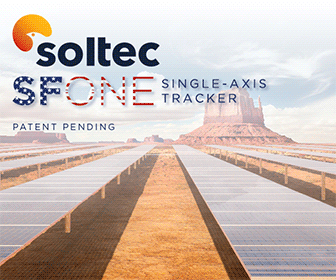Apartment Tenants Will Now Receive Solar Savings on Personal Utility Bills
If you live in an apartment complex with a solar system, you most likely do not receive the solar savings on your personal utility bill. California has decided to change that for affordable multifamily housing tenants.
In December, the California Public Utilities Commission (CPUC) unanimously approved the new Solar on Multifamily Affordable Housing (SOMAH) program for low-income apartment tenants to directly benefit from the solar systems on their apartment's roofs.
"Usually, affordable housing apartment owners pay for the electricity used in the complex's common areas, not the individual units. Solar PV systems installed on these properties are typically only used to offset electricity in these areas. The property owners receive the savings directly, not the tenants. The SOMAH program will now also offset the tenants' individual utility bills," says Luciana Da Silva, Adroit Energy's Director of Marketing and Corporate Development.
Although the AB 693 (Eggman, 2015) Program Administrator and bill verbiage still need to be ironed out, here are the major key points:
How Will Tenants Directly Save from Solar?
Low-income tenants will receive credits on utility bills through tariffs, namely virtual net metering (VNEM) tariffs. VNEM tariffs provide a mechanism for allocating bill credits from system generation among the property occupants, including both common area electric accounts and the accounts of tenants.
Under SOMAH, tenants receive at least 51% of the VNEM credits from any solar project.
What's in it for the Property Owners?
SOMAH does not exclusively help the tenants. The bill will allow 49% of VNEM tariffs to flow to common areas. This split will provide the maximum flexibility to property owners to tailor their projects to their particular circumstances.
Additionally, AB 693 authors emphasize the significant value to retaining common area Time of Use (TOU) rate requirements in order "...to encourage property owners to participate in additional energy efficiency, demand response, and other energy management activities."
Solar systems owners will still be eligible to receive the 30% Federal Incentive Tax Credit will be available when owner's purchase the system.
Which Affordable Housing Properties Qualify for SOMAH?
- The property must be located in a designated disadvantaged community as identified by the California Environmental Protection Agency (CalEPA)... Or at least 80 percent of the households in the building must have household incomes at or below 60 percent of the area median income
- Units must be separately metered and eligible for a virtual VNEM tariff.
- It must be an existing building
- The installed solar system must produce at least 1 kW of electricity, and not more than 5 MW, alternating current rated peak electricity.
- Your utility providers must be Pacific Gas and Electric Company, San Diego Gas & Electric Company, Southern California Edison Company, Liberty Utilities Company, and PacifiCorp Company.
- There must be at least 10 years remaining on the term of the property's affordability restrictions.
Property Owners Cannot Hike Up the Rent
Property owners are required to sign a contract to ensure no additional costs for the system will be passed on to low-income tenants at the properties. This includes increased rents, adjustments to utility allowances, or other mechanisms. Owners must demonstrate 100% of the economic benefits of the system's generation will be reserved for tenants through the life of the system.
The rule also applies to third-party system owners, whom must also "...provide ongoing operations and maintenance of the system, monitor energy production, and kWh production levels projected for the system are achieved."
Ensures Economic Development Benefits through Job Training and Local Hiring
The commission will develop local hiring plans to promote economic development in disadvantaged communities and job training requirements similar to those currently in place for the MASH program. In addition, program service providers must produce economic benefits by providing job opportunities to residents of disadvantaged communities.
Funding and Timeline
- This $1 billion program provides up to $100 million annually
- SOMAH will serve multifamily affordable housing with funding available for up to 10 years, between 2016 and 2026.
- The overall target is to install at least 300 megawatts (MW) of generating capacity on qualified properties by 2030
- Program begins August 2018
The Results
AB 693 authors are confident the program will expand solar installations throughout California. "We expect the program to significantly reduce the costs of solar PV systems serving multifamily affordable housing, and, as a result, encourage more widespread development of these systems for the benefit of multifamily affordable housing tenants."
Adroit Energy | www.adroitenergy.com









.jpg?r=7248)
.gif?r=7404)
.jpg?r=9799)
